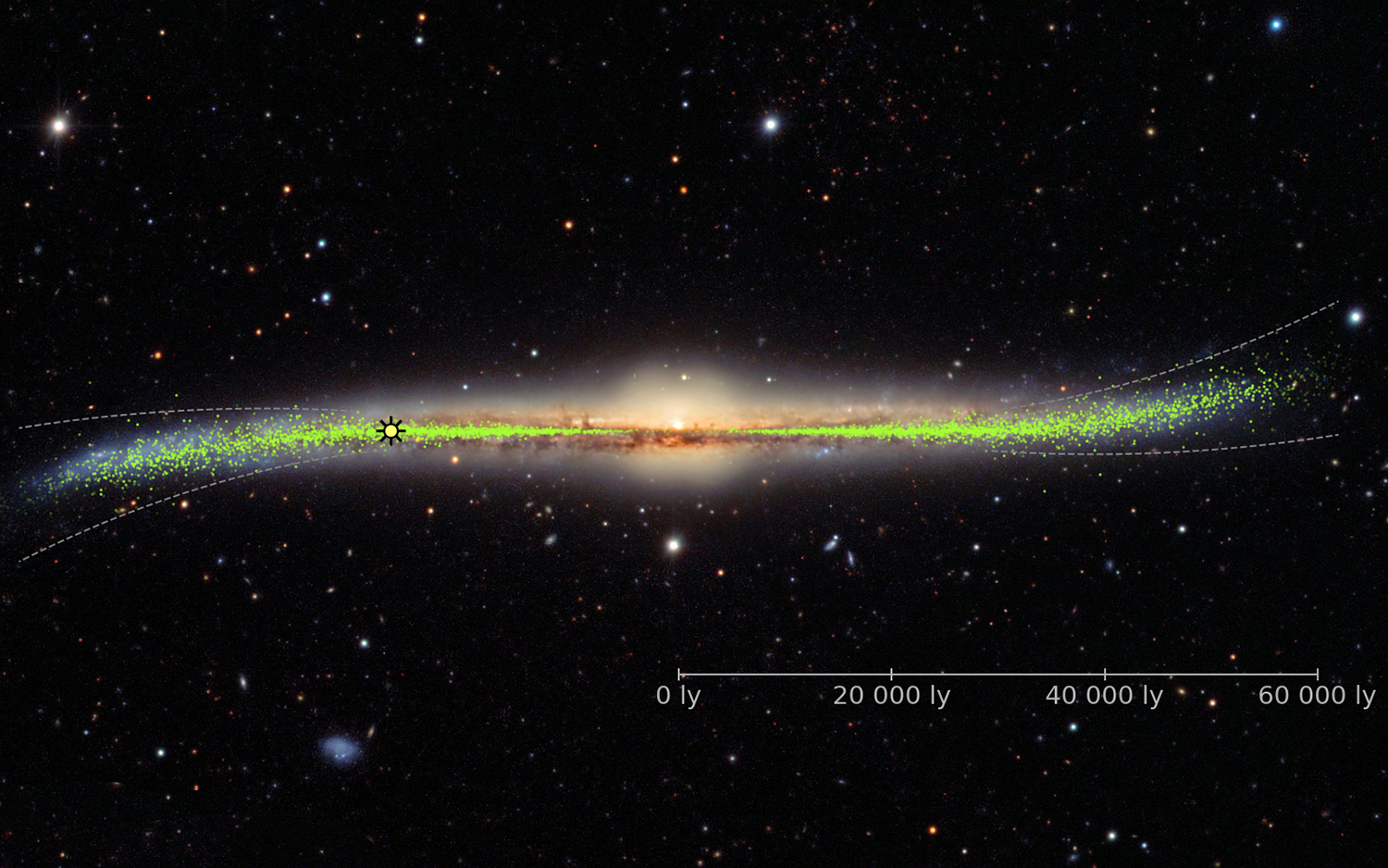New 3D Map of the Milky Way Shows Our Galaxy's Heart Is Totally Twisted

A new, incredibly detailed 3D map of the Milky Way has revealed that its central disk is wavy, much like an enormous potato chip.
This new picture of the galactic disk — the central region of the Milky Way that holds the galaxy's biggest and brightest stars — came from an analysis of more than 2,000 giant, pulsating stars distributed across the galaxy.
While prior maps hinted at this warped shape, they relied on simulations and observations of other galaxies; this new map is the first to confirm the Milky Way's twisted heart through thousands of stellar measurements, the scientists reported in a new study. [11 Fascinating Facts About Our Milky Way Galaxy]
Their work is part of an ongoing Polish astronomy project called the Optical Gravitational Lensing Experiment (OGLE), a large-scale sky survey investigating galactic structure and dark matter, and searching for extrasolar planets, according to the OGLE website.
The Milky Way measures about 100,000 light-years across and holds approximately 250 billion stars — give or take about 150 billion — and at least 100 billion planets. Astrophysicists have known that the Milky Way is spiral-shaped since the 1950s; over decades, observations and computer simulations refined the picture of the galaxy that we call home, said lead study author Dorota Skowron, a member of the OGLE team and a postdoctoral researcher with the Warsaw University Observatory in Poland.
By the end of the 20th century, large sky surveys that counted stars and measured their brightness enabled scientists to guess the number of the Milky Way's spiral arms and describe the tightness of those spirals, but uncertainties still lingered, Skowron told Live Science in an email.
"For example, the map from the SDSS survey [Sloan Digital Sky Survey] favors two spiral arms, while the WISE [Wide-field Infrared Survey Explorer] satellite map suggests four," Skowron explained. "Our reconstruction of the star formation history shows that the four arm spiral structure is consistent with what we see."
Sign up for the Live Science daily newsletter now
Get the world’s most fascinating discoveries delivered straight to your inbox.

To build this new map, Skowron and her team incorporated data from 2,431 Cepheid stars, which are relatively young stars (less than 300 million years old) that are also bright supergiants, burning as much as 10,000 times hotter than our sun. Cepheids pulse in regular patterns; by tracking these patterns, scientists can determine how bright a star is, and then calculate its direct distance "with a very high accuracy — better than 5%," Skowron said.
Once the researchers determined the positions of these stars — some as distant as the outer boundary of the galactic disk — the study authors were able to build a 3D map of the galaxy's center.
While galactic disk warping has been detected before, "this is the first time we can use individual objects to trace its shape in three dimensions," study co-author and OGLE team member Przemek Mróz said in a statement.
"Warping may have been caused by the past interactions with satellite galaxies, interactions with intergalactic gas, or dark matter," Mróz said.
The positions of thousands of Cepheids across the Milky Way can be used as "a golden standard" for exploring more questions about the Milky Way and other galaxies, such as how these twisted disks form, how a galaxy's stars migrate after they’re born, and what stellar orbits look like in a warped galaxy, Skowron said.
The findings were published online today (Aug. 1) in the journal Science.
- Spaced Out! 101 Astronomy Photos That Will Blow Your Mind
- 8 Galaxies With Unusual Names
- Amazing Astronomy: Victorian-Era Illustrations of the Heavens
Originally published on Live Science.

Mindy Weisberger is an editor at Scholastic and a former Live Science channel editor and senior writer. She has reported on general science, covering climate change, paleontology, biology and space. Mindy studied film at Columbia University; prior to Live Science she produced, wrote and directed media for the American Museum of Natural History in New York City. Her videos about dinosaurs, astrophysics, biodiversity and evolution appear in museums and science centers worldwide, earning awards such as the CINE Golden Eagle and the Communicator Award of Excellence. Her writing has also appeared in Scientific American, The Washington Post and How It Works Magazine. Her book "Rise of the Zombie Bugs: The Surprising Science of Parasitic Mind Control" will be published in spring 2025 by Johns Hopkins University Press.










